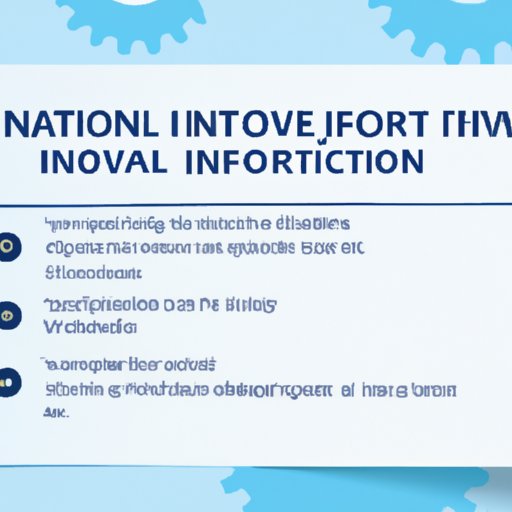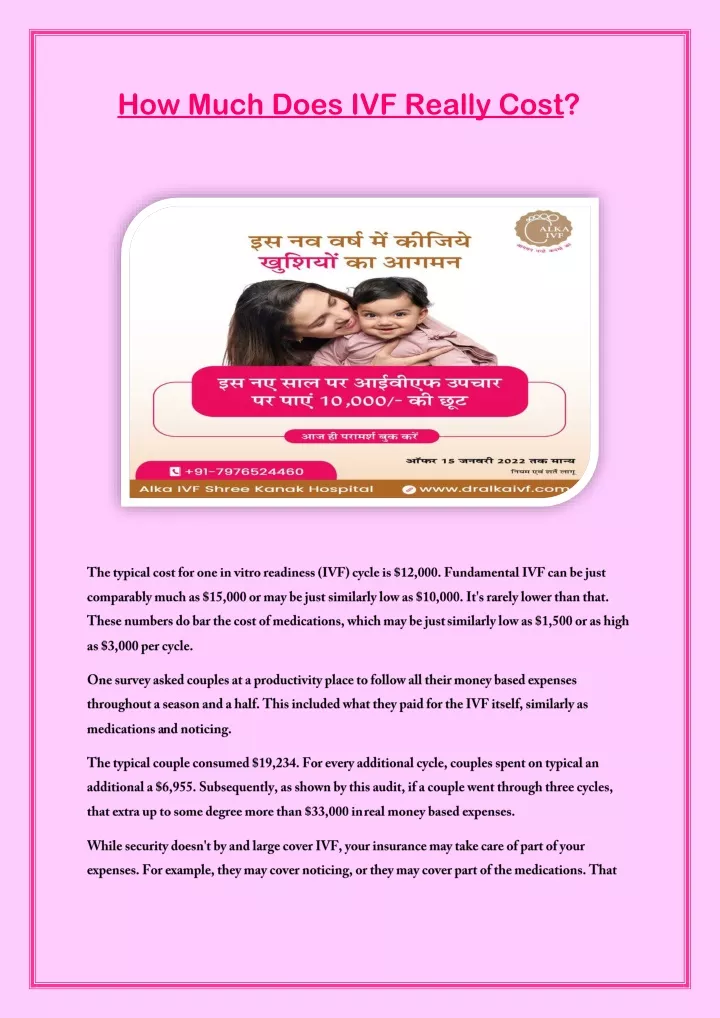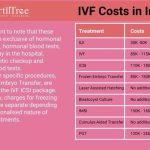How Much Does IVF Really Cost? Your Guide to Understanding the Price of Starting a Family
In vitro fertilization (IVF) is a life-changing option for many people dreaming of parenthood. But if you’ve started looking into it, you’ve probably noticed one big question keeps popping up: How much is this going to cost me? The truth is, IVF isn’t cheap, and the numbers can feel overwhelming. Don’t worry—I’m here to break it all down for you in a way that makes sense, with real numbers, practical tips, and a few surprises you might not have thought about yet. Whether you’re just curious or ready to take the plunge, this guide will give you the full picture of IVF costs in 2025, plus some fresh ideas to help you plan.
Let’s dive into what you’re really paying for, why prices vary so much, and how you can make it work for your budget. Spoiler: It’s not just about the procedure itself—there’s a lot more to the story.

What Is IVF, and Why Does It Cost So Much?
IVF is a fertility treatment where doctors take eggs from a woman’s ovaries, mix them with sperm in a lab, and then place the resulting embryo back into the uterus to grow into a baby. It’s a high-tech process that’s helped millions of people have kids when natural conception isn’t an option. But all that science comes with a price tag.
The cost isn’t just about the doctor’s time or the lab equipment. You’re paying for medications, monitoring, specialized staff, and sometimes extra steps like genetic testing or donor eggs. Plus, IVF isn’t a one-and-done deal for most people—it often takes a few tries to get pregnant, which can add up fast. In the U.S., a single IVF cycle typically ranges from $12,000 to $25,000, but that’s just the starting point. Let’s unpack what’s behind those numbers.
The Base Price of IVF: What’s Included?
When you hear “IVF cycle,” it usually means the core process: stimulating your ovaries to produce eggs, retrieving those eggs, fertilizing them, and transferring an embryo. Here’s what that base price—usually $11,000 to $14,000 in 2025—covers:
- Monitoring: Regular ultrasounds and blood tests to check how your ovaries are responding to meds. This happens over a couple of weeks.
- Egg Retrieval: A quick surgery where a doctor uses a needle to collect eggs from your ovaries while you’re under anesthesia.
- Lab Work: The magic happens here—sperm meets egg, and embryos start growing under a microscope.
- Embryo Transfer: Placing the embryo into your uterus, hoping it sticks and grows.
Sounds straightforward, right? But that’s just the foundation. Most people end up spending more because of extras that aren’t included in this base fee. Think of it like buying a car—the sticker price doesn’t include the fancy rims or heated seats.
Hidden Costs You Might Not Expect
The base price is only part of the story. Here are some add-ons that can push your total way higher than you planned:
Medications: The Big Budget Buster
Fertility drugs are a huge chunk of the cost—anywhere from $3,000 to $7,000 per cycle. These shots help your ovaries make more eggs, but the exact price depends on your body and how much medicine you need. Some people need higher doses, especially if they’re older or have lower egg reserves.
- ✔️ Tip: Ask your doctor about “mini-IVF,” a lower-dose option that might save you a few thousand bucks if you’re a good candidate.
- ❌ Heads-Up: Generic drugs can cut costs, but not all clinics offer them.
Pre-Treatment Testing
Before you even start, you’ll need tests to check your fertility—think blood work, ultrasounds, and maybe a semen analysis for your partner. This can run $500 to $1,500, depending on what’s needed. It’s like a pre-flight checklist to make sure everything’s ready for takeoff.
Freezing Embryos (Cryopreservation)
Got extra embryos? Freezing them for later costs about $1,000 upfront, plus $300 to $600 a year to keep them stored. It’s a smart move if you want more kids down the road, but it’s another expense to plan for.
Genetic Testing (PGT)
Want to screen your embryos for health issues? Preimplantation genetic testing (PGT) adds $2,000 to $5,000 per cycle. It’s optional, but many choose it for peace of mind, especially if there’s a family history of genetic conditions.
How Much Does IVF Cost Across the U.S.?
Where you live can make a huge difference. IVF isn’t the same price everywhere—cities with higher living costs or more demand tend to charge more. Here’s a quick look at 2025 averages based on recent data:
| City | Average Cost per Cycle | Notes |
|---|---|---|
| New York City | $23,000 – $27,000 | High demand, top clinics |
| Los Angeles | $22,000 – $25,000 | Lots of options, premium services |
| Chicago | $18,000 – $22,000 | More affordable, still quality |
| Houston | $15,000 – $19,000 | Lower cost of living helps |
| Rural Areas | $12,000 – $17,000 | Fewer clinics, travel might add up |
Why the gap? Big cities have more competition, but also higher overhead—rent, staff salaries, you name it. Rural clinics might be cheaper, but you could end up spending extra on travel if they’re far away.
Success Rates and Multiple Cycles: The Real Cost of a Baby
Here’s the tough part: IVF doesn’t always work the first time. Success rates depend a lot on age, and most people need 2-3 cycles to get pregnant. According to the CDC’s 2022 data (the latest detailed stats), here’s what you’re looking at:
- Under 35: 55% success rate per cycle
- 35-37: 40% success rate
- 38-40: 26% success rate
- Over 40: 8-10% success rate
So, if you’re 38 and it takes three tries, you’re not just paying $20,000—you could be looking at $60,000 or more. The real cost isn’t just one cycle; it’s the cost of a successful delivery. Studies from the New England Journal of Medicine estimate that in the U.S., the average cost per live birth ranges from $50,000 to $114,000, depending on how many cycles it takes.
- ✔️ Tip: Some clinics offer multi-cycle packages (like 2 cycles for $30,000) that can save you money if you need more than one try.
- ❌ Heads-Up: Don’t assume the first cycle will work—budget for at least two to be safe.
Insurance and IVF: Will It Help?
Insurance is a mixed bag. Only 21 states in 2025 require some form of fertility coverage, and even then, IVF isn’t always included. If you’re lucky, your plan might cover testing or meds, but full IVF coverage is rare—less than 25% of employers offer it, per a 2024 survey by the Society for Human Resource Management.
- Good News: States like New York, New Jersey, and Illinois have strong mandates, so check your local laws.
- Bad News: Federal plans (like for military or government workers) cover IVF, but only partially, and private plans often leave you on your own.
Call your insurance provider and ask: “What’s covered for infertility?” Get it in writing—vague promises won’t help when the bills roll in.
Beyond the Basics: Special Cases That Up the Price
Not everyone’s IVF journey looks the same. Here are some scenarios that can bump up your costs—and what to expect.
Using Donor Eggs or Sperm
If you need donor eggs (say, if you’re over 40 or have low egg quality), add $20,000 to $45,000 per cycle. Donor sperm is cheaper—about $500 to $1,500—but it still adds up. Why so pricey? You’re paying for the donor’s time, screening, and sometimes agency fees.
Surrogacy
If you can’t carry a pregnancy yourself, surrogacy can cost $50,000 to $200,000 total. That includes IVF, the surrogate’s compensation, legal fees, and more. It’s a big leap, but for some, it’s the only path to parenthood.
Intracytoplasmic Sperm Injection (ICSI)
For male fertility issues (like low sperm count), ICSI—where a single sperm is injected into an egg—adds $1,000 to $2,500 per cycle. It’s common, used in about 70% of U.S. IVF cases, but not always necessary.
Interactive Quiz: What’s Your IVF Budget?
Let’s make this personal. Answer these quick questions to get a rough idea of what IVF might cost you:
- How old are you?
- A) Under 35
- B) 35-40
- C) Over 40
- Where do you live?
- A) Big city
- B) Smaller town
- Do you think you’ll need extras like donor eggs or genetic testing?
- A) Yes
- B) No
Results:
- Mostly A’s: $15,000 – $25,000 for one cycle, higher success odds.
- Mix of A’s and B’s: $20,000 – $35,000, depending on location and tries.
- Mostly B’s or C’s: $30,000 – $60,000+, especially with extras or multiple cycles.
This isn’t exact, but it’s a starting point. Talk to a clinic for a real quote!
Three Costs No One Talks About (But You Should Know)
Most articles stick to the obvious stuff—meds, cycles, testing. But here are three under-the-radar expenses that can sneak up on you:
1. Emotional Toll and Therapy
IVF is stressful. Failed cycles, hormone swings, and waiting can take a toll. Therapy isn’t cheap—$100 to $200 per session—and many people need it. A 2023 study from Frontiers in Global Women’s Health found that women who don’t conceive after IVF are 48% more likely to need mental health support. Budgeting for this isn’t just smart—it’s self-care.
- ✔️ Tip: Look for online support groups or sliding-scale therapists to save money.
2. Travel and Time Off Work
If your clinic’s far away, gas, flights, or hotels add up—maybe $500 to $2,000 per cycle. Plus, you’ll miss work for appointments and recovery. The average American loses 3-5 days per cycle, and if you don’t have paid leave, that’s lost income.
- ✔️ Tip: Ask about telehealth monitoring to cut trips.
3. Long-Term Storage Decisions
What happens to unused embryos? Freezing them costs $300-$600 a year, but after a few years, you might face tough choices: keep paying, donate, or discard. Clinics don’t always explain this upfront, but it’s a recurring cost that can stretch into thousands over a decade.

How to Save Money on IVF Without Cutting Corners
IVF’s expensive, but you’ve got options to make it more doable. Here’s how to stretch your dollars:
Shop Around for Clinics
Prices vary even in the same city. Call 3-5 clinics and ask for a detailed breakdown—some offer discounts for paying upfront or cash. A 2024 FertilityIQ report found 27% of patients negotiate 5-10% off.
Look Into Financing
- Loans: Fertility-specific loans (like from Resolve) offer 6-12% interest, lower than credit cards.
- Grants: Groups like Baby Quest give $2,000-$15,000 to qualifying families—apply early, as spots fill fast.
- Clinic Plans: Some offer “shared risk” deals—pay $25,000 for 3 cycles, get a refund if it doesn’t work.
Travel Abroad
IVF in Mexico costs $7,500-$10,000 per cycle, 70% less than the U.S., with similar success rates. Spain and the Czech Republic are also popular, averaging $5,000-$8,000. Add travel costs, but it’s still a steal for many.
- ✔️ Tip: Research clinic credentials—look for international accreditation like JCI.
Poll: What’s Your Biggest IVF Worry?
Let’s hear from you! Pick one:
- A) The cost is too high.
- B) I’m scared it won’t work.
- C) I don’t know where to start.
Drop your answer in the comments—I’ll tally them up and share what others think!
The Future of IVF Costs: What’s Changing in 2025?
IVF isn’t static—new trends are shaking things up. Here’s what’s on the horizon:
Government Push for Access
In February 2025, a White House Executive Order called for lower IVF costs and better insurance coverage. It’s early, but this could mean more state mandates or federal subsidies soon. Keep an eye on your local news—policy shifts could save you thousands.
Tech Breakthroughs
AI is making IVF smarter. A 2024 study in Nature Medicine showed AI-guided embryo selection boosted success rates by 15%, potentially cutting the need for extra cycles. It’s not everywhere yet, but clinics adopting it might charge more upfront—or save you money long-term.
Mini-IVF Gaining Traction
This gentler, cheaper option ($5,000-$10,000 per cycle) uses fewer drugs and works for younger patients or those with good egg reserves. It’s not as common, but demand’s growing—ask your doctor if it fits you.
Real Stories: What IVF Costs Really Feel Like
Numbers are one thing, but what’s it like to live it? Here are two quick stories:
- Jess, 34, Chicago: “We spent $45,000 over two cycles. The first failed, and I cried for weeks. The second worked—our son’s 2 now. Worth it? Yes. Easy? No.”
- Mike, 41, Texas: “Donor eggs pushed us to $60,000. Insurance covered nothing. We took a loan, but seeing my wife hold our daughter made every penny real.”
These aren’t just bills—they’re dreams, stress, and hope rolled into one.
Your IVF Cost Checklist: Plan Like a Pro
Ready to get started? Use this step-by-step guide to figure out your budget:
- Call Your Insurance: Ask what’s covered—testing, meds, anything. Write it down.
- Pick a Clinic: Get quotes from at least three. Ask about packages or discounts.
- Estimate Meds: Talk to your doctor about doses—budget $5,000 to be safe.
- Add Extras: Need donors, ICSI, or PGT? Tack on $1,000-$45,000 depending.
- Plan for Two Cycles: Multiply your total by 2 for a realistic cushion.
- Explore Savings: Look into loans, grants, or travel options.
Total it up—you’ve got your starting number!
Final Thoughts: Is IVF Worth the Price?
IVF costs a lot—money, time, emotions—but for many, it’s the key to a family they couldn’t have otherwise. In 2025, you’re looking at $15,000-$60,000+ to get started, depending on your situation. It’s not a small decision, but with planning, research, and a little creativity, you can make it work.
What’s your next step? Maybe it’s a call to a clinic, a chat with your partner, or just saving this article for later. Whatever it is, you’re not alone—millions have walked this path, and you’ve got the tools to figure it out. Got questions? Drop them below—I’m here to help!





